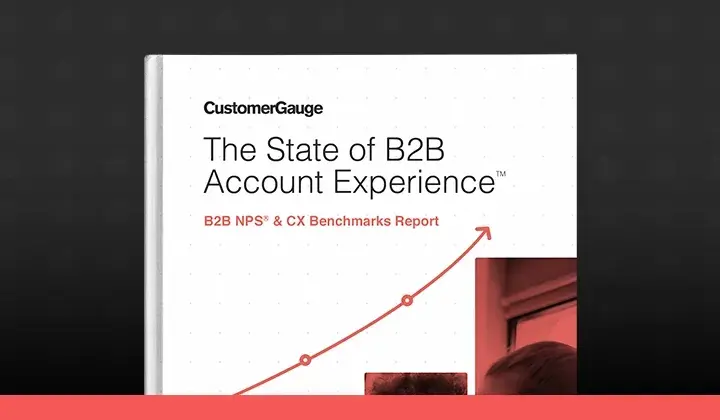"Life is really simple, but we insist on making it complicated." -- Confucius
In our previous article, we explained how using statistical analysis in a Net Promoter System can lead to certain pitfalls. Companies use statistics to find out which drivers most affect their Net Promoter® Score (correlation analysis) and to predict how changing individual drivers will impact NPS (regression analysis).
Statistical analysis is indeed a valid approach, but there is an easier way to achieve the same or even better results. In this article, we explain how simple short surveys allow companies to gain the right information to improve their customer experience, in the easiest possible way.
What is Simple?
The survey above employs the standard NPS question “How likely are you to recommend,” but expands upon this. At just three questions long the survey is simple, but at the core of these surveys is that respondents only choose drivers that are important to their score.
While many traditional surveys also ask the Ultimate Question, they look to understand what affects this question by asking for a rating of every driver, important or unimportant.
So, what then are the key properties that separate these two types of survey method? The table below is a list of critical differences.
| Simple | Traditional | |
| Easy and quick survey | ✔ | ✖ |
| High response rate | ✔ | ✖ |
| Continual rollout & immediate action | ✔ | ✖ |
| Driver importance | ✔ | ✔ |
| Predictions | ✔ | ✔ and ✖ |
Quick and Easy
At just 2-3 minutes in length, they are fast and easy to understand. Rating each driver is not required, instead customers only have to select which drivers are the most important to their score. And the more they become familiar with the survey’s ease and speed, the greater their likelihood of doing them again. Let’s face it! People don’t like doing surveys, and they see little benefit in doing them. However, they are still the best way to get the customer’s opinion about their experience.
High response rate
Most companies struggle to get sufficient response rates. However, from our long experience of doing surveys, we know that short surveys lead to higher response rates, which means your data is more representative of your entire customer base.
Also, the shortness of such surveys avoids the problem of survey fatigue. As traditional survey questioning is not only long but also repetitive, respondents can lose interest and begin to tick boxes at random, which affects survey accuracy.
Continual rollout & immediate action
Simple and short surveys do not need to follow the traditional process of being carried out in ‘blocks.’ Conducting surveys in blocks creates data that is not actionable. For example, receiving answers from 800 detractors within a short time is hardly manageable. Responding to all detractors within the 24 hours (best practice) would not be possible.
Many traditional surveys are done in blocks to conduct statistical analysis, but this also intensifies the “snapshot in time” problem. Meaning the opinions and problems received from customers at the very beginning of a survey block may not exist or be relevant 3 or 4 months later.
Conducting short and simple surveys avoids the ‘block’ problem. There is no need to wait for all data to be received to begin the analysis, meaning there is no need for a start or finish line. Without this hurdle, companies are free to receive feedback in real-time, enabling them to not only take action immediately to save individual customers, but also carry out continuous driver analytics.
At any moment in time, the survey provides enough information and the right information to look back over an interval of time and discover what is most affecting the customer experience (more on this below).
Driver importance
Traditional surveys aim at receiving feedback on every driver across a company. With simple short surveys, though, only those reasons selected are determined as important.
But shouldn’t we aim to know the importance of every driver in a company?
Deciding what to focus on to improve your customer experience is the primary goal of customer feedback surveys, so knowing how customers rate less important drivers has little if any value. A manager responsible for a particular driver (or touch point) may out of curiosity want to know how customers rate it. However, all she really needs to know is that it does not impact customer loyalty.
How do you then determine if the selected drivers are equally important?
You can, of course, ask the respondent to rate the selected drivers as but this makes the survey longer, and we most often see that it has little impact on the end result.
Focusing on driver importance rather than rating each driver means companies can skip the hassle and avoid the pitfalls of carrying out correlation analysis. Unlike traditional surveys that need to analyze all drivers to determine the most important. With simple surveys, the customer gives you the answer directly and calculating each driver’s contribution to the Net Promoter Score is simple math - as simple as the NPS equation itself.
Predictions
Knowing what drivers affect customer experience, companies start to ask: “What if we change this driver, what will be the result?” For traditional surveys, this is done with regression analysis, which uses statistical modeling to understand how changing a particular driver will affect a company’s overall score.
Regression analysis though can be problematic and difficult. It requires some understanding of the errors that can occur and how to spot them. And if the chosen regression model chosen doesn’t fit the data it may require a lot of time and resources to find one that does. For a more in-depth explanation on this see our previous article.
With simple surveys such as the one outlined above, companies can make simple yet realistic predictions much easier. If a company decides to improve a touch point, say customer support, they can then ask:
“If we increase the score of everyone that chose customer support as an issue, by just one 1 point, what would happen to our overall NPS?”
An unrealistic scenario? No, we have seen better improvements of scores by just communicating about improvements to the relevant customers.
The ease of this is that it needs no statisticians, no complicated mathematics or painstaking modeling. All it requires is simple math.
Don’t overcomplicate it if you don’t have to
Learning what your customers think of you and what they need is not as difficult as you think.
Simple and short surveys offer respondents a more appealing survey process that creates higher response rates, repeat respondents, and accurate answers. Able to be carried out on a rolling basis, companies gain continuous and immediate snapshots of their customers. And by identifying important drivers in real-time, companies are not only able to take direct action at the individual level but also predict with ease what will happen in the future.


